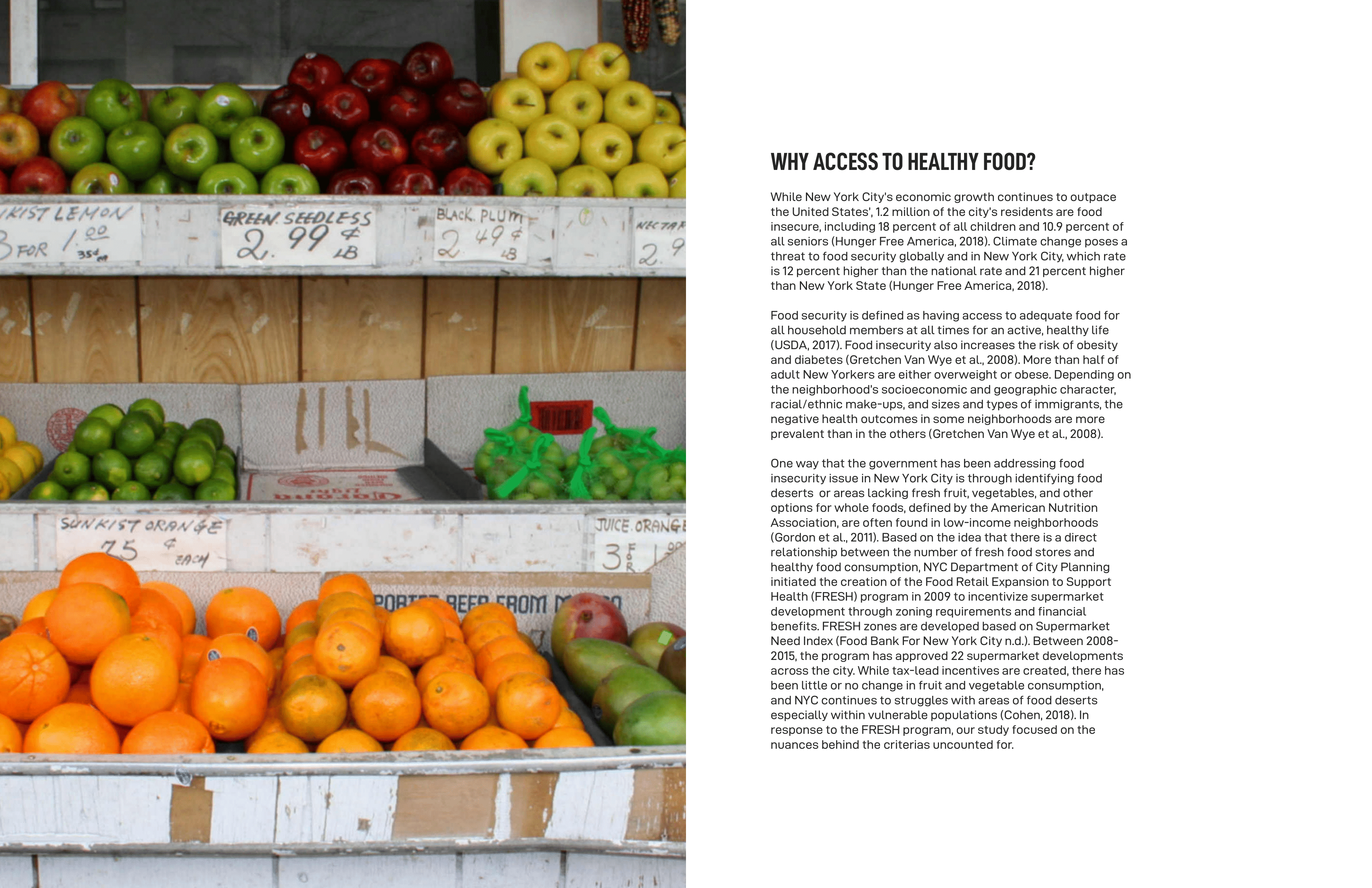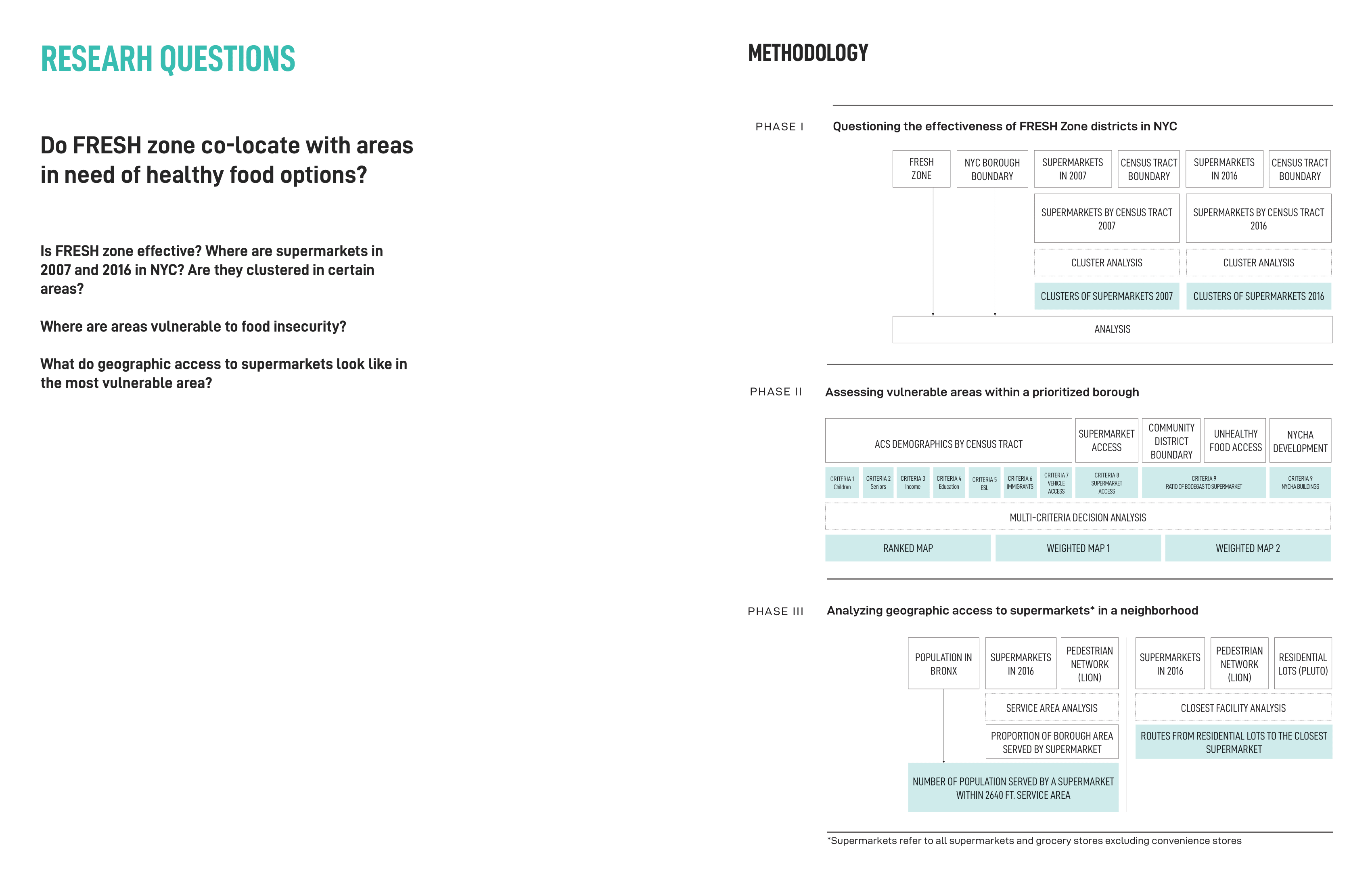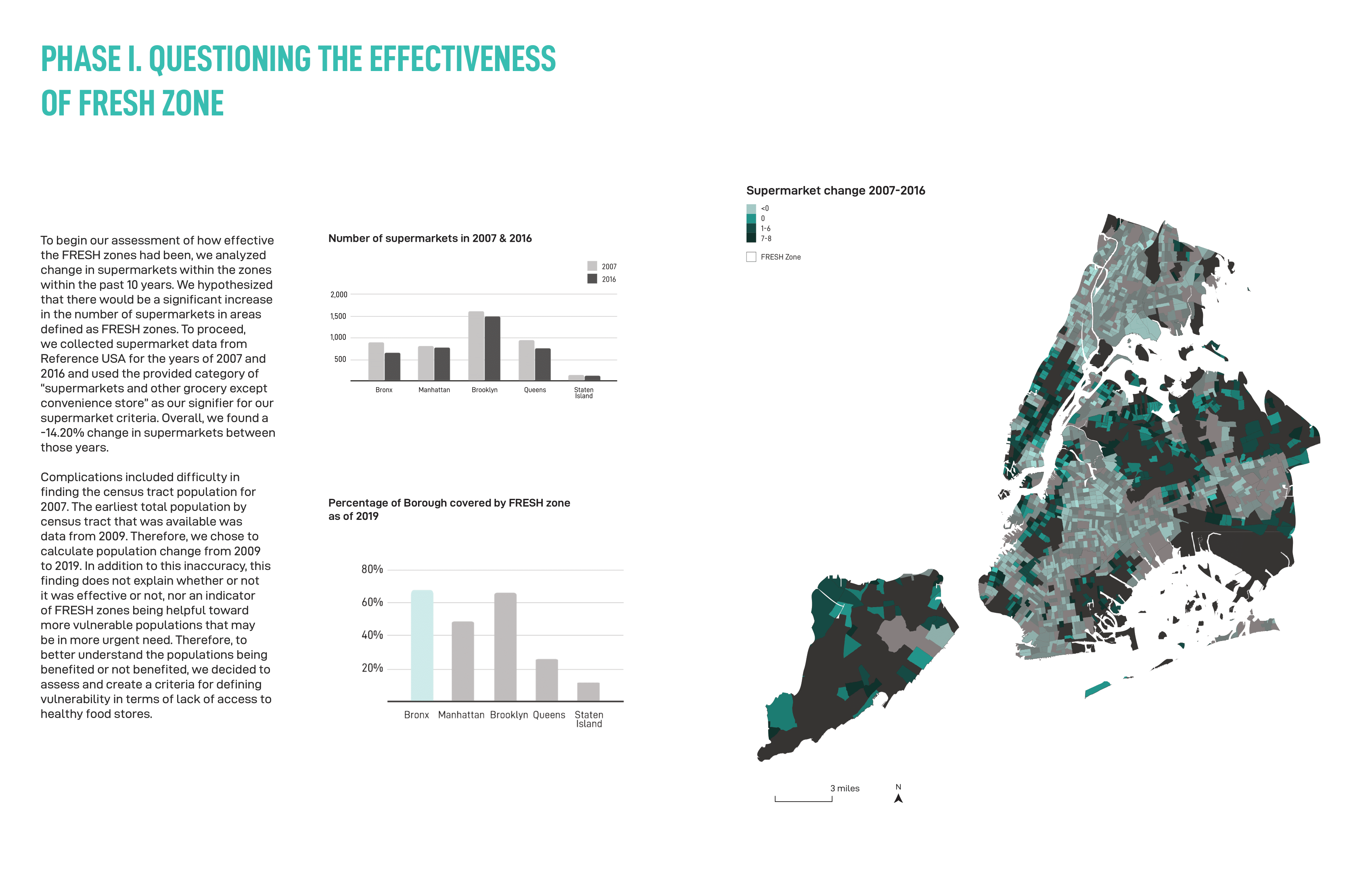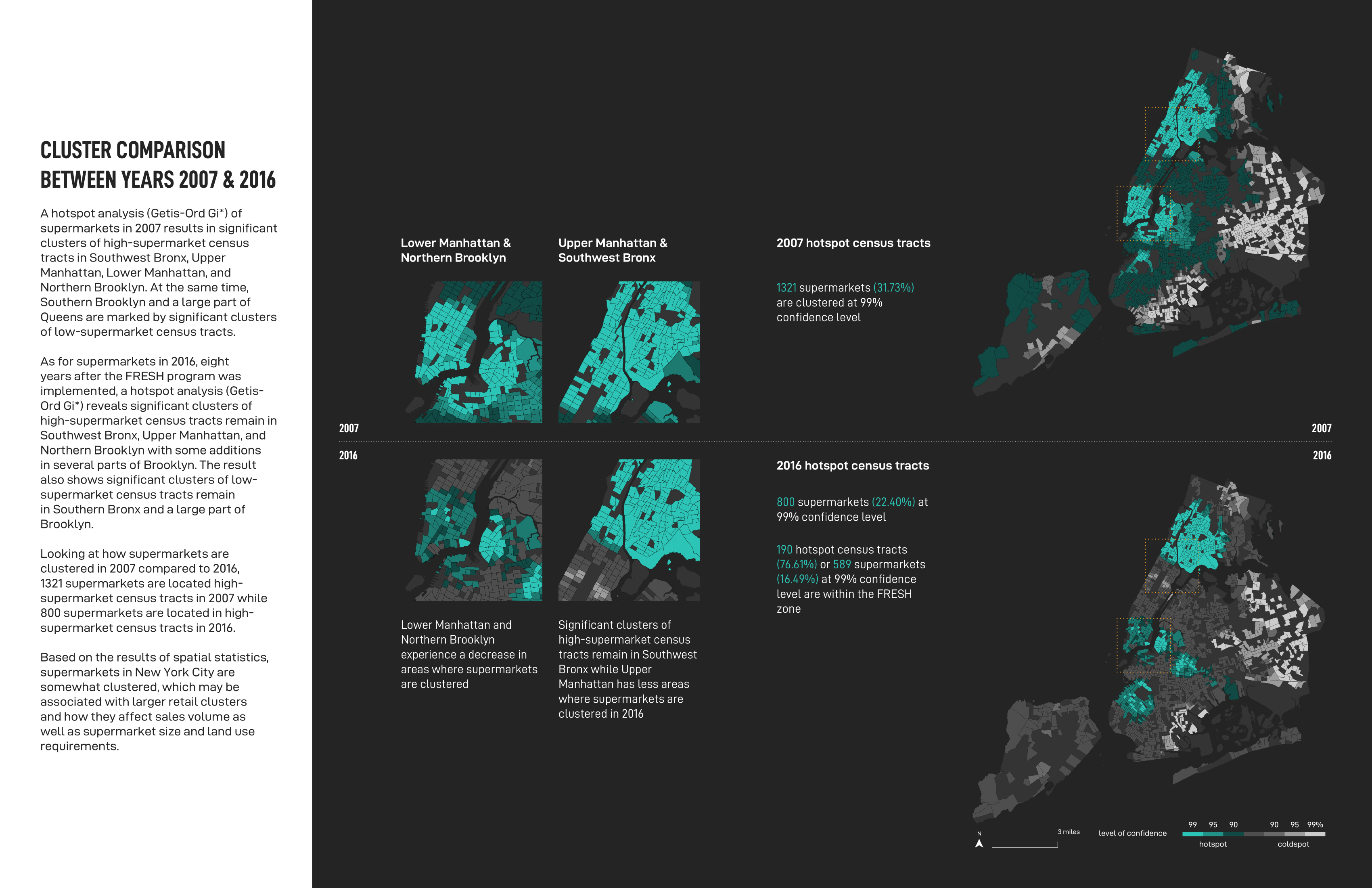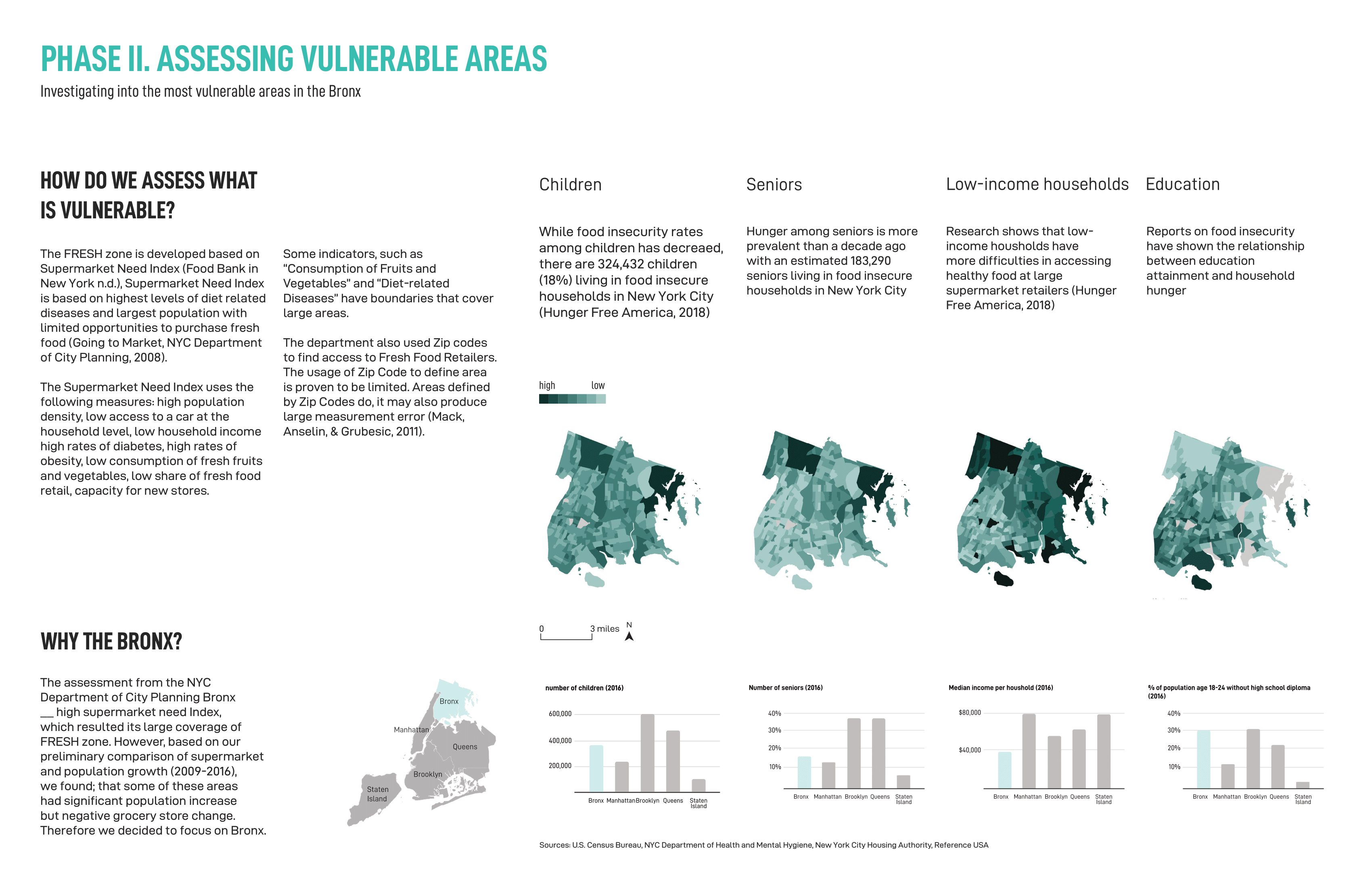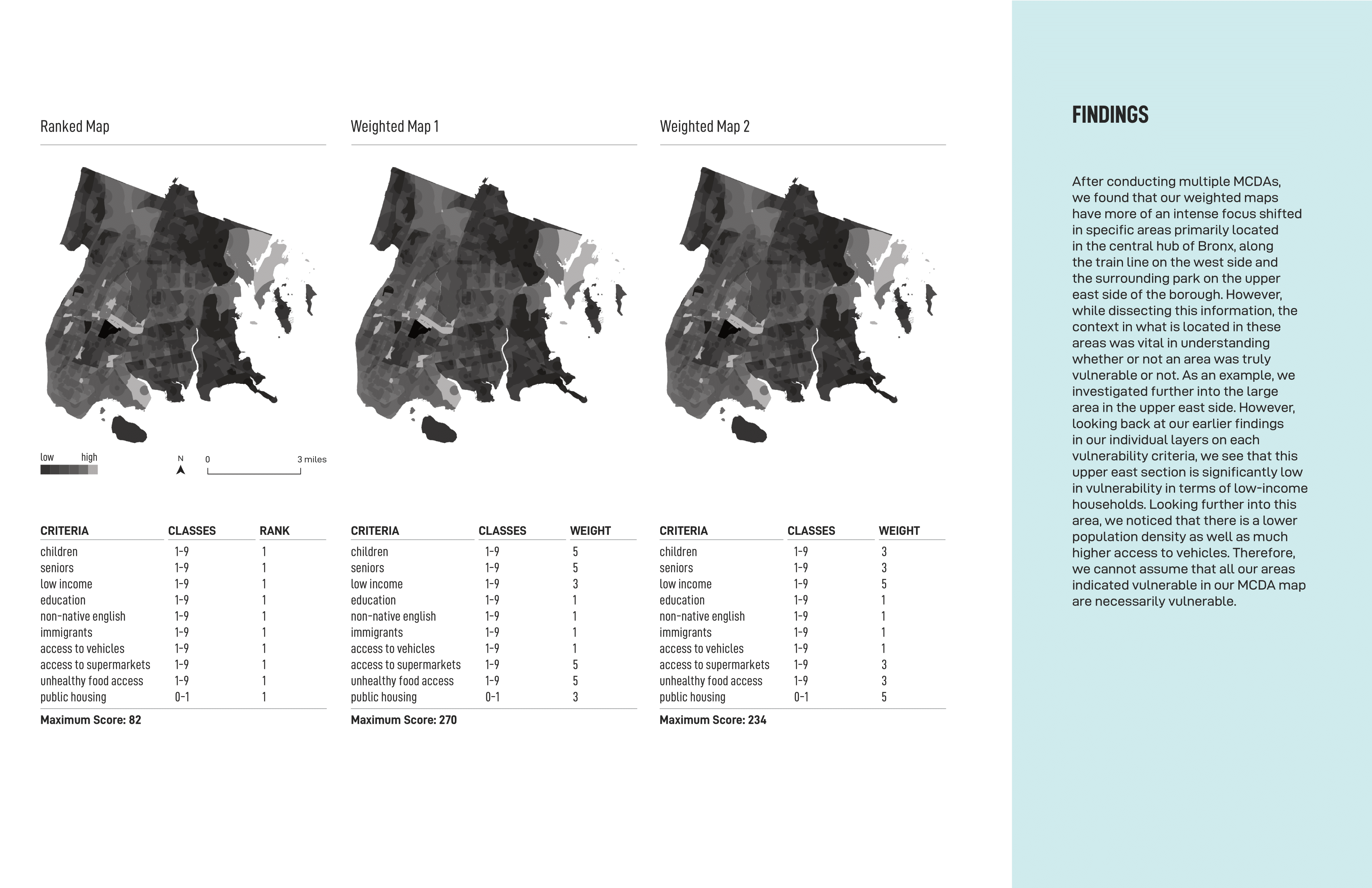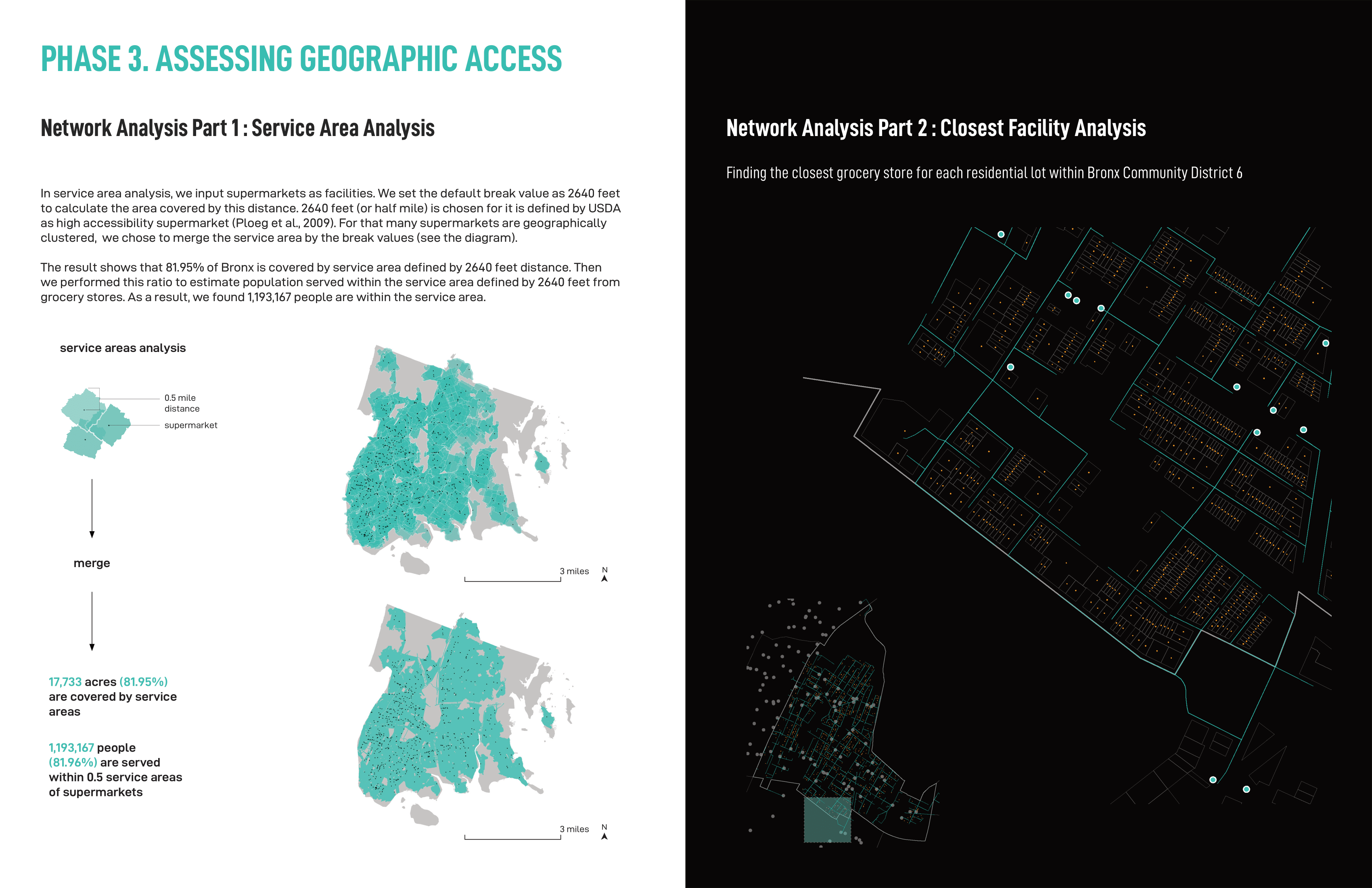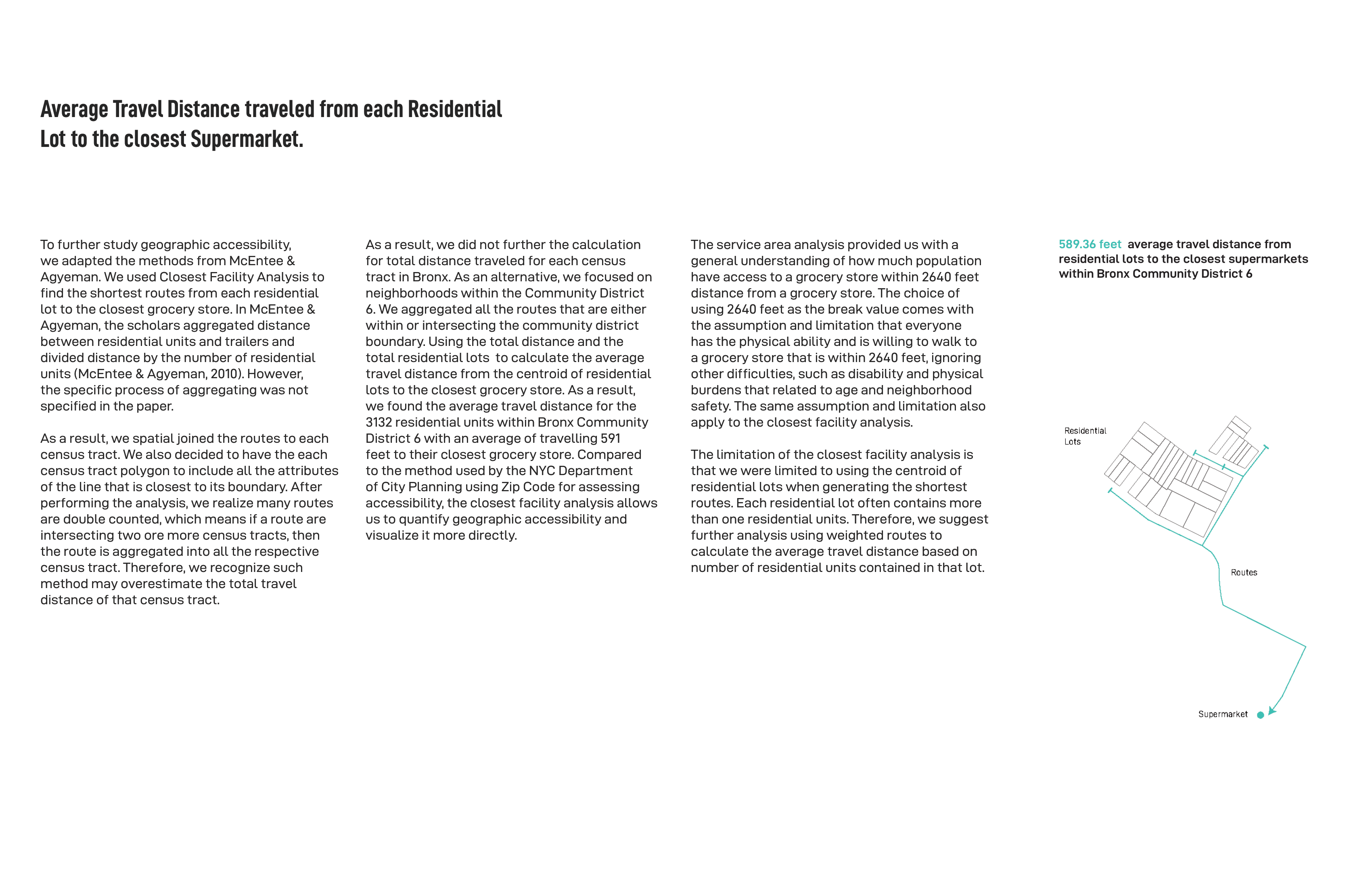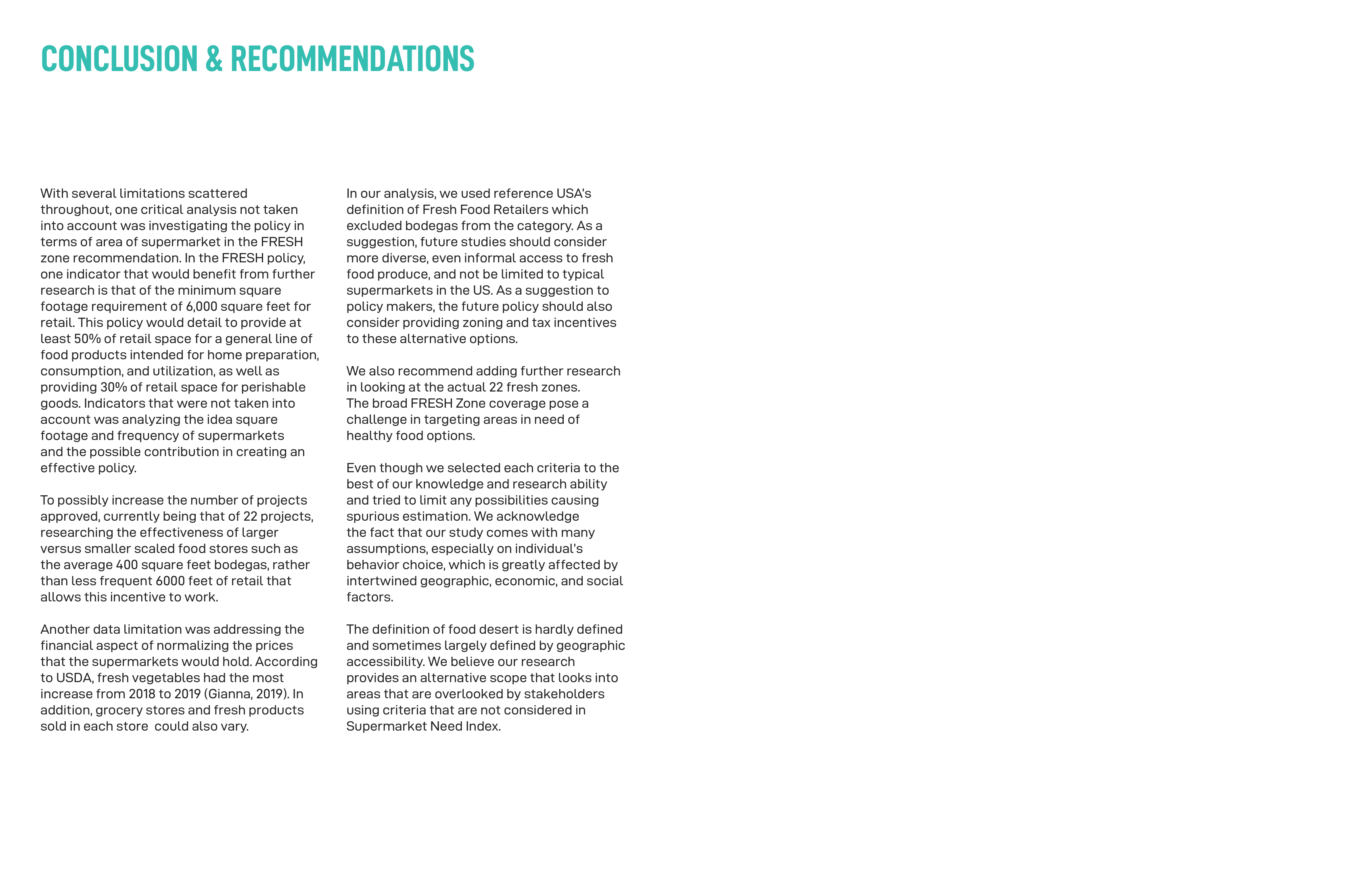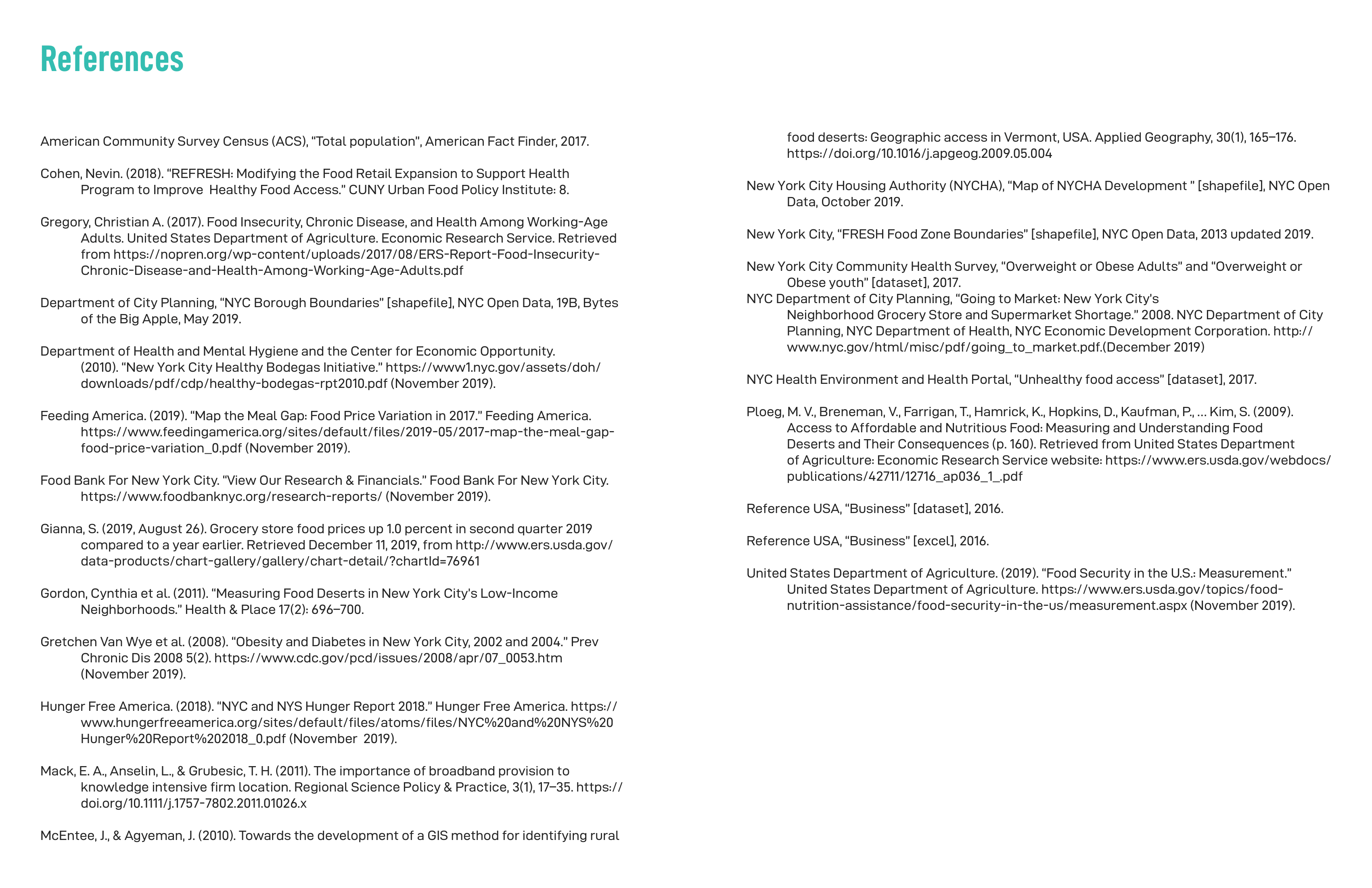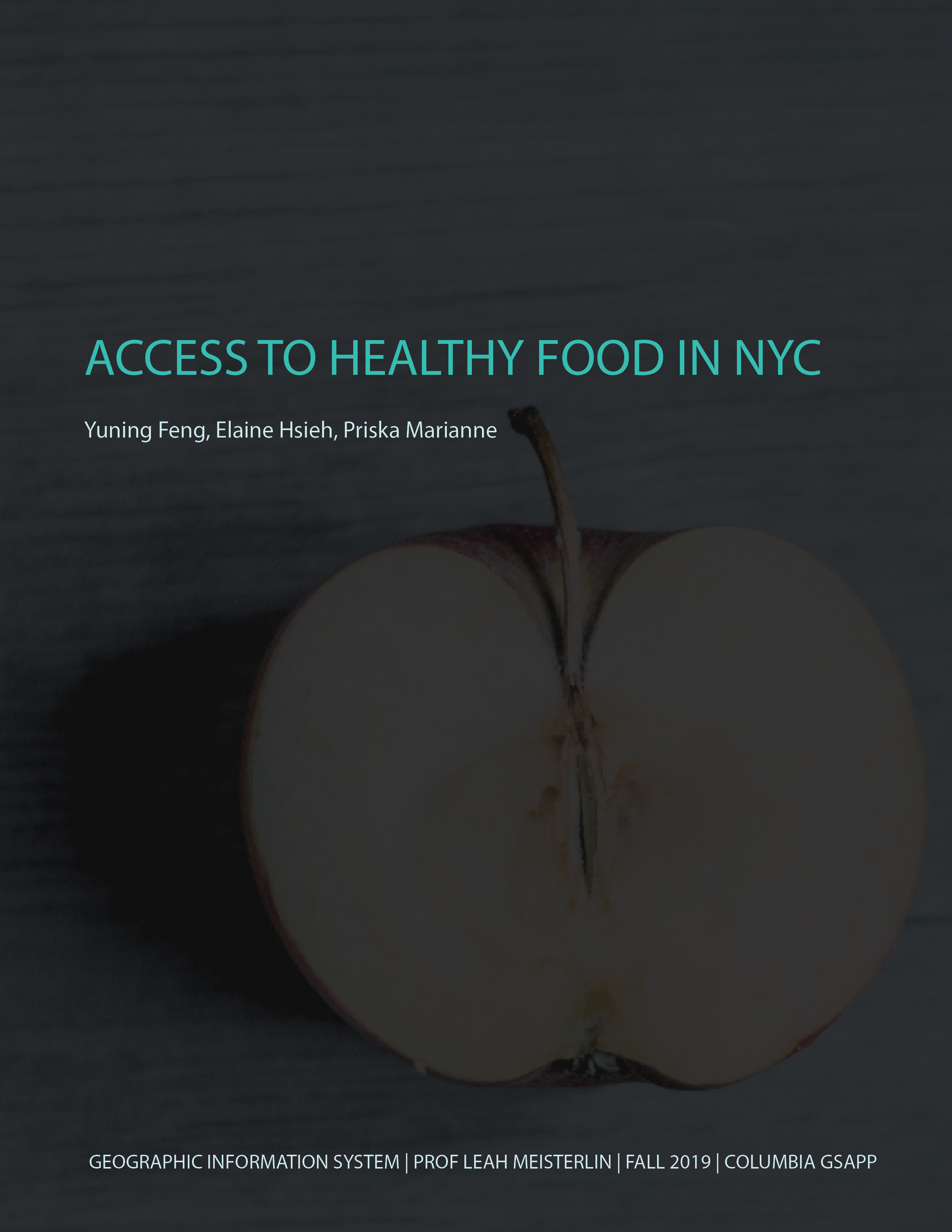02.
Access to Healthy Food in New York City
2019, Urban Planning
With Elaine Hsieh and Priska Marianne
Tools: ArcGIS, Illustrator, Indesign
While New York City’s economic growth continues to outpace the United States, 1.2 million of the city’s residents are food insecure, including 18 percent of all children and 10.9 percent of all seniors (Hunger Free America, 2018). Food security is defined as having access to adequate food for all household members at all times for an active, healthy life (USDA, 2017). Food insecurity also increases the risk of obesity and diabetes (Gretchen Van Wye et al., 2008). More than half of adult New Yorkers are either overweight or obese. Depending on the neighborhood’s socioeconomic and geographic character, racial/ethnic make-ups, and sizes and types of immigrants, the negative health outcomes in some neighborhoods are more prevalent than in the others (Gretchen Van Wye et al., 2008).
One way that the government has been addressing food insecurity issue in New York City is through identifying food deserts or areas lacking fresh fruit, vegetables, and other options for whole foods, defined by the American Nutrition Association, are often found in low-income neighborhoods (Gordon et al., 2011). NYC Department of City Planning initiated the creation of the Food Retail Expansion to Support Health (FRESH) program in 2009 to incentivize supermarket development through zoning requirements and financial benefits.
The objective of this study is to understand the effectiveness of the FRESH program. Our investigation includes questioning the effectiveness of FRESH zone districts, identifying communities that are vulnerable to food insecurity, and assessing geographic access to supermarkets in vulnerable areas.
